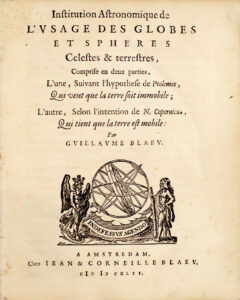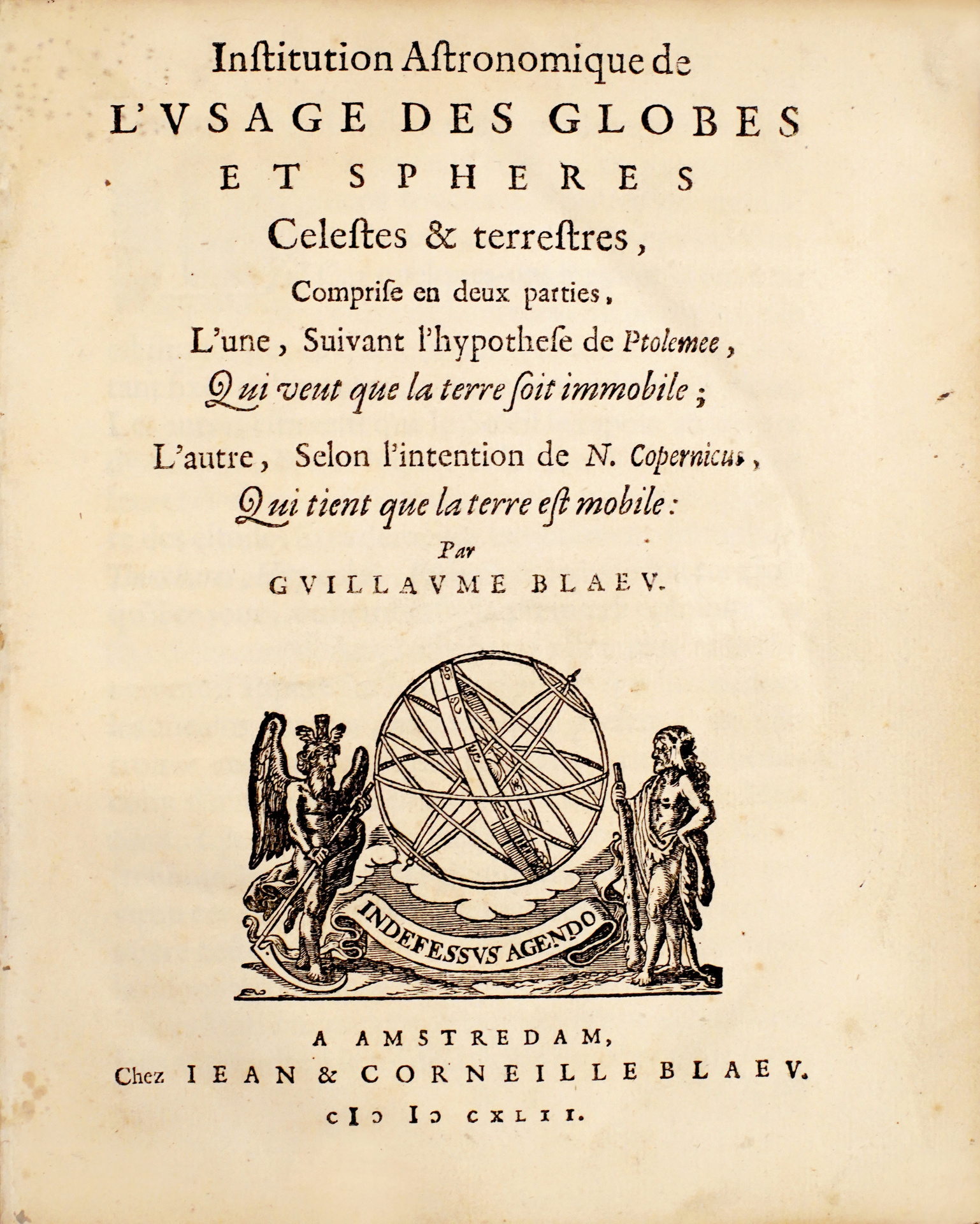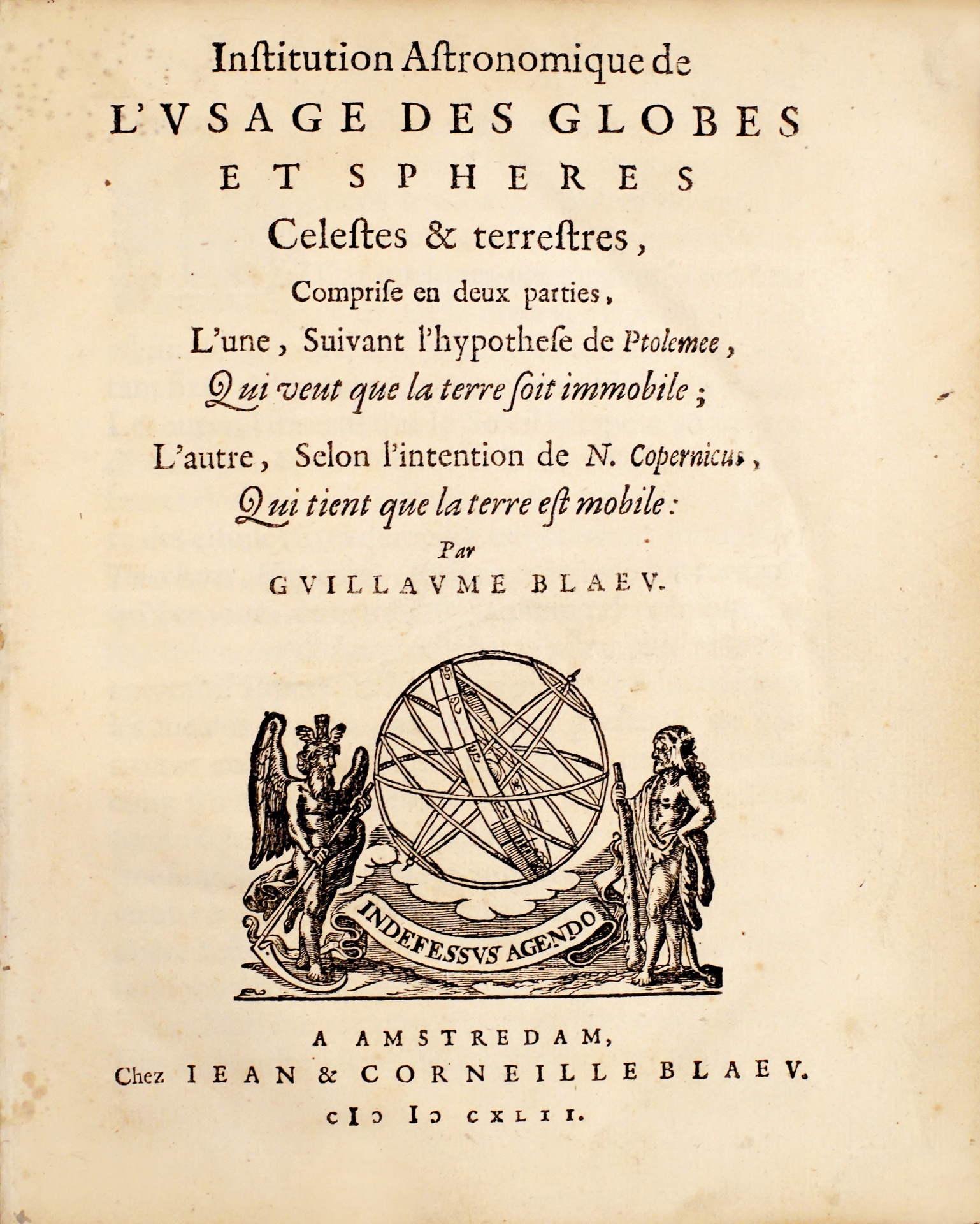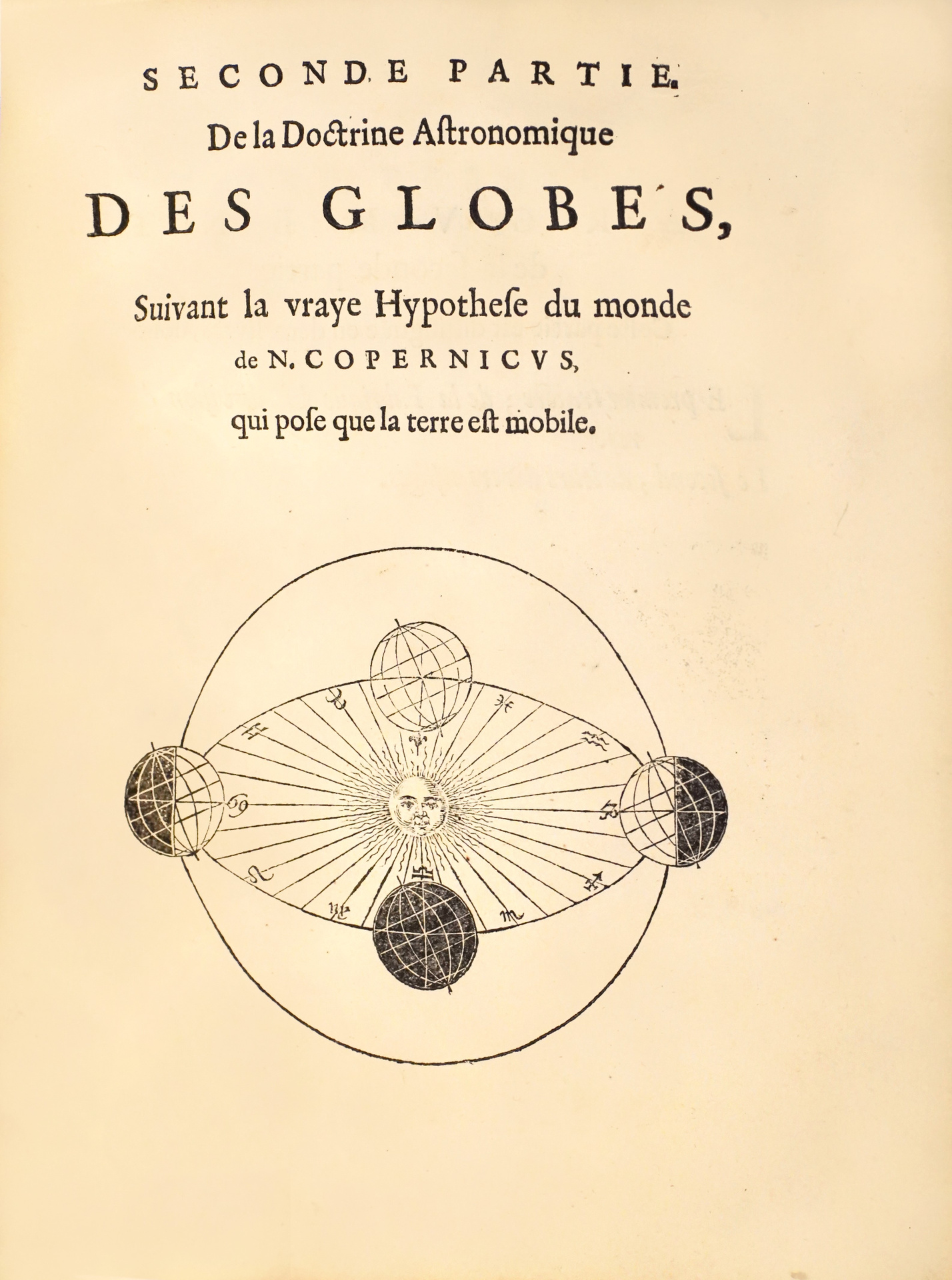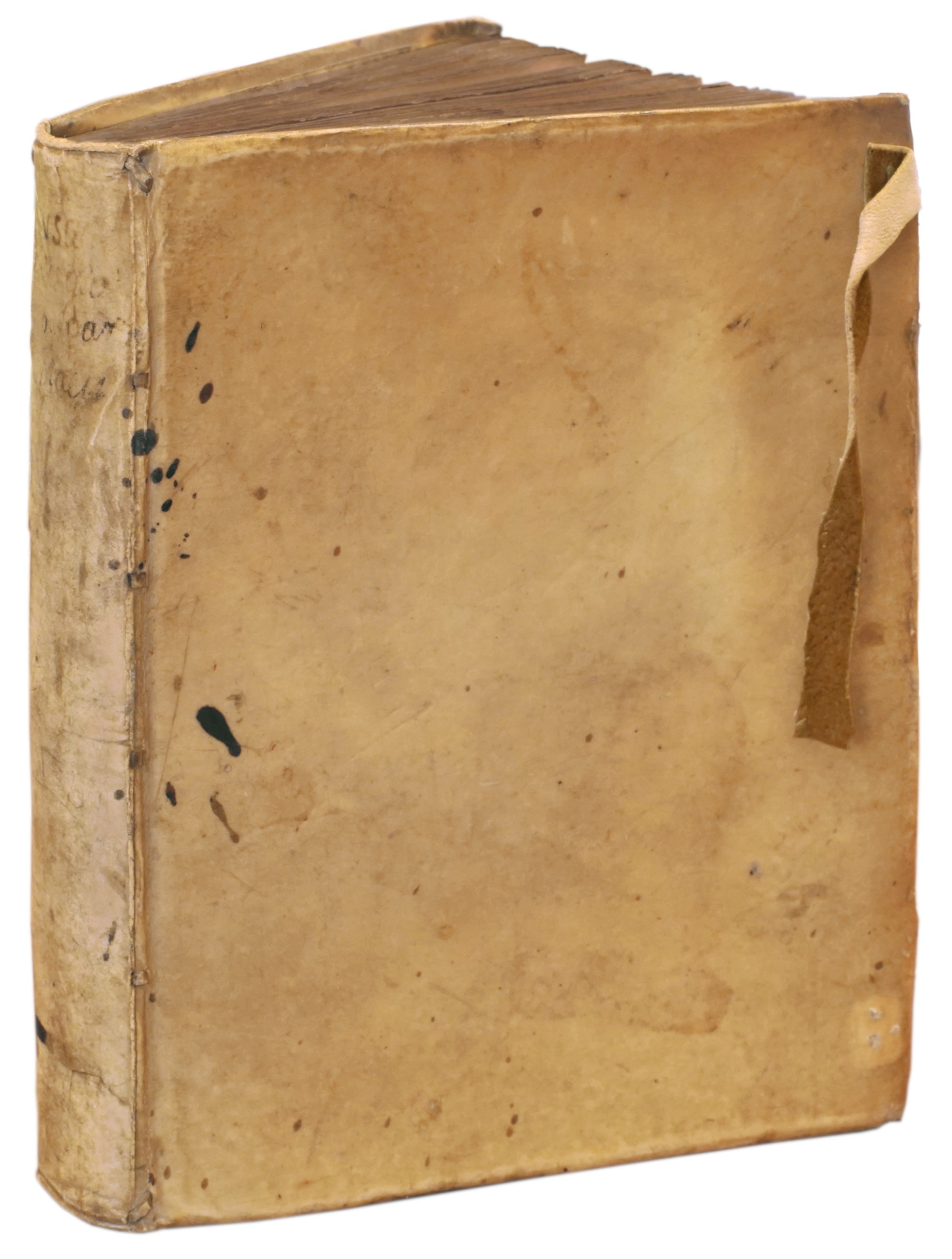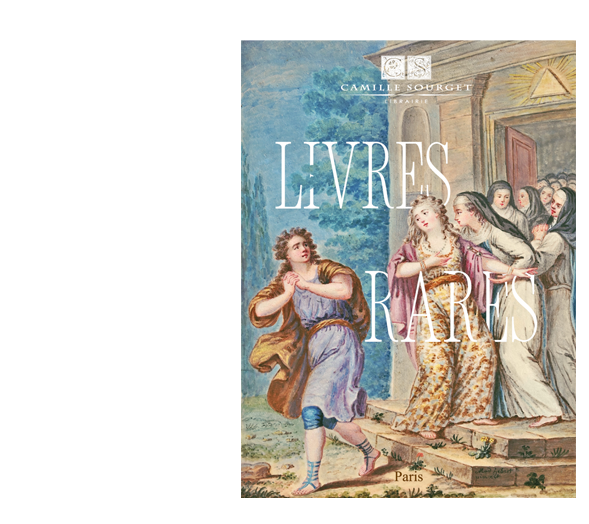Amsterdam, chez Jean & Corneille Blaeu, 1642.
4to [192 x 154 mm] of (9) ll., 277 pp., many woodcuts in the text. Overlapping vellum, flat spine with handwritten title, remains of ties. Contemporary binding.
Rare first French edition of this treatise dealing with the use of astronomical instruments.
Graesse, Trésor de livres rares, 435 ; Stevenson, Terrestrial and Celestial globes, p. 223.
The first edition was published in Dutch in 1620 in 8vo format.
The work, published by Jean and Corneille Bleau, the sons of Guillaume Blaeu, is divided into two parts, the first one based on Ptolemy’s theory, the second one on Copernicus’s study, following the arrangement of Galileo’s Dialogo.
We find here the way to draw dials.
“The master globe-maker authored the ‘Institution Astronomique’ so that his customers might get the most out of his celestial and terrestrial globes. Blaeu gives a detailed explanation of the various parts of a globe, followed by a series of nearly 150 exercises. By positioning the terrestrial globe as Blaeu directs, it is a simple matter to determine the time in different parts of the world. There are exercises for both the celestial globe and the terrestrial globe.”
Willem Jansoon Blaeu (1571-1638), a Dutch astronomer and mathematician, is famous for having perfected cartography. He founded his own printing house in Amsterdam and was able to publish his own works. His sons, Johan and Cornelis, pursued his work.
« This work gave accounts of the opposing Ptolemaic and Copernican systems of the planets, as Blaeu thought the Ptolemaic system was still a useful introduction to the topic. Blaeu had worked on the island of Hven with Tycho Brahe and was a firm adherent to the Copernican system.
It should be remembered that Galileo was condemned for his Copernican stance just the previous year, but Blaeu, publishing his works in the Protestant Netherlands, was not subject to the prohibitions of the Roman Catholic authorities”.
The present edition is illustrated with 34 woodcuts in the text, geometric and astronomical figures.
A precious copy, very fresh, of this important scientific work, preserved in its authentic contemporary overlapping vellum binding.
Provenance: ex-libris Samuel O. Hoffman and Pierre Duhem.
Pierre Duhem (1861-1916) was a French physicist, chemist, science historian and epistemologist.
